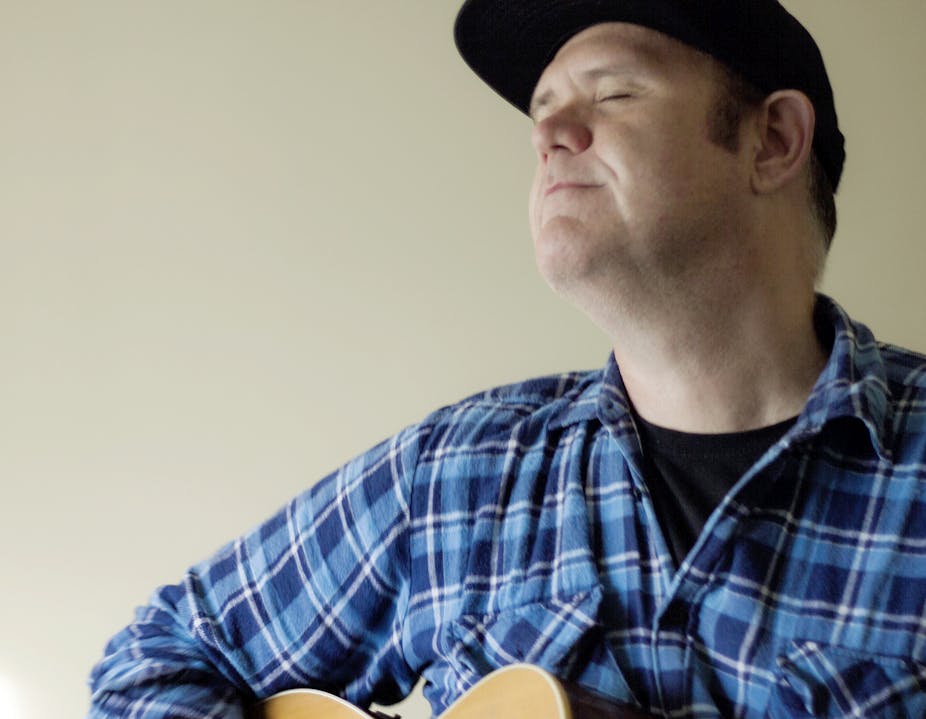Whenever I approach mass cultural events – especially ones that seem to bear the conceit that they are “higher” and more culturally valuable than, say, a comic book fair – I am reminded of two of the 20th century’s great cultural figures: Virginia Woolf, whose unaffected scorn of dilettantism seems snidely relevant when considering the Sydney Festival, and Theodor Adorno, whose distrust of commodified culture is particularly pertinent in Sydney, a cultural space that prides itself on its corporate credentials.
Indeed, as I approach the fence cordoning off the “cultural” section of Hyde Park to see Australian singer Perry Keyes perform – given that entry to the festival at large is free, the fence simply serves a policing function, designating, apparently, the area of the Park deemed fit for cultural activity by the state-corporate nexus – or “partnership,” in the preferred nomenclature – I am accosted by two notable pieces of advertising. The “Principal Government Partner,” I read on a sign painted on the fence, is “Trade and Investment Arts NSW Government” and the “Principal Partner” is “The Star Sydney.” Note which strand of the “partnership” warrants qualification.
Now, I admit I could be accused of a certain strain of wowserism vis-a-vis such remarks. Why shouldn’t people drink and dance awkwardly, and better themselves by partaking of “culture”, regardless of who is commissioning said revelry-cum-re-education? This relationship between the cultural and the corporate in fact constitutes a tension at the heart of Perry Keyes’ entire show.
Inside the Spiegeltent, the audience, mostly grey-haired, settle down as Keyes limps onto stage. He looks like a battered ex-Leaguie picking up a guitar at the pub – albeit one accompanied by a seven-piece band. The show is a sell-out. The question that immediately comes to mind – is Perry Keyes popular, or is it just 5.15pm on a Sunday? – is partly answered by the gentleman to my left, who informs me that he’s here because he prefers the Festival’s musical shows over its acrobatic ones.
After an opening instrumental, Keyes launches into a series of songs and stories based in the badlands of Sydney’s Western Suburbs. Redfern, Mount Druitt and Campbelltown are featured – even Doonside and Airds cop a mention (surely the first time in Australian musical history?).
Keyes’ characters are strippers, punchy ex-boxers, drunks, Westie stoners in desert boots and flannos who “smoke cones” while listening to Iron Maiden. The whole show is saturated in nostalgia. In Keyes’ own words, his songs “straddle the boundary between rampant nostalgia and abject dismay” – yet there does seem to be a melancholic sincerity to lyrics like “she just scored a brand new drug and she shot it through her soft brown skin”.
Black and white footage of Sydney’s suburbs from the last century plays on a collection of screens behind the band, adding to the general atmosphere of nostalgia. Lads congregate at Western Suburbs’ train stations; a craggy old man smokes a durrie at Central.
Keyes accompanies himself with some fine work on the acoustic steel string, but his strength lies in the timbre of his vocals. Despite its limited range, there’s an exquisite pathos to his voice, halfway between Springsteen and Waits. Musically, The Byrds come to mind, along with country raconteurs such as Kris Kristofferson.
The songs are mostly ballads, though there are a few rockier ones as well, characterised by the driving 4/4 rhythm so often associated with Australian pub rock. Highlights from the band include some nuanced accordion parts as well as the guitarist’s searing leads.
There is, undeniably, a peculiar tension overlaying the whole event between Keyes’ demotic voice, as self-styled representative of the proletaria, and the distinctly bourgeois sensibilities of the organisers and attendees of the Festival.
What does it mean when the cultural production of a working-class renegade like Keyes becomes simply another slice of brie for the festival-going elite? Is there any actual political or social significance to the whole thing? Or does the nostalgic tone in fact mask the brutal socio-economic conditions Keyes is describing – and thus, ironically, perform a kind of cultural gentrification, despite Keyes’ intentions to the contrary? Is Australia’s brutal class and race history, the background of Keyes’ songs, made maudlin through his “rampant nostalgia”?
At the end of the day, there is nothing polemical about Keyes’ lyrics. They are observational, simple recordings of lived moments infused with an elegiac grandeur. Yet compared to, for example, David Ireland’s brilliant 1971 novel, The Unknown Industrial Prisoner, Keyes’ evocations of working-class life seem rather trite. Perhaps a comparison across such vastly different media is unfair.
In any case, one cannot help feeling a little uneasy, listening to expressions of dismay regarding Australian class and race relations whilst sitting in the Spiegeltent surrounded by affluent Sydneysiders. The show ends and I buy a latte from the retro ice-cream stall on my way out.
Perry Keyes performed at the Sydney Festival on Jan 18. Details here.

